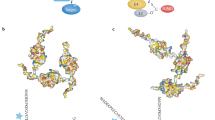Abstract.
Ten years after its discovery, the small ubiquitin-like protein modifier (SUMO) has emerged as a key regulator of proteins. While early studies indicated that sumoylation takes place mainly in the nucleus, an increasing number of non-nuclear substrates have recently been identified, suggesting a wider stage for sumoylation in the cell. Unlike ubiquitylation, which primarily targets a substrate for degradation, sumoylation regulates a substrate’s functions mainly by altering the intracellular localization, protein-protein interactions or other types of post-translational modifications. These changes in turn affect gene expression, genomic and chromosomal stability and integrity, and signal transduction. Sumoylation is counter-balanced by desumoylation, and well-balanced sumoylation is essential for normal cellular behaviors. Loss of the balance has been associated with a number of diseases. This paper reviews recent progress in the study of SUMO pathways, substrates, and cellular functions and highlights important findings that have accelerated advances in this study field and link sumoylation to human diseases.
Article PDF
Similar content being viewed by others
Avoid common mistakes on your manuscript.
Author information
Authors and Affiliations
Corresponding author
Additional information
Received 19 March 2007; received after version 16 July 2007; accepted 1 August 2007
Rights and permissions
About this article
Cite this article
Zhao, J. Sumoylation regulates diverse biological processes. Cell. Mol. Life Sci. 64, 3017–3033 (2007). https://doi.org/10.1007/s00018-007-7137-4
Published:
Issue Date:
DOI: https://doi.org/10.1007/s00018-007-7137-4




